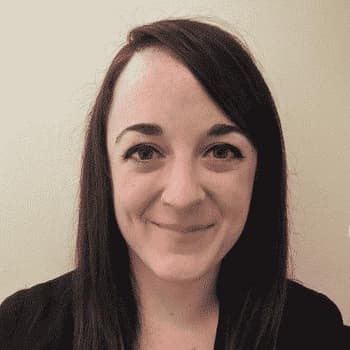Stimulant Treatment in Washington & Oregon
Written by Thomas Christiansen
& Medically Reviewed by Maureen McNulty
Medically Reviewed
Up to Date
Last Updated - 6/17/2022
View our editorial policyStimulants are a type of substance that speeds up various processes within the brain and the body. These include medications prescribed for disorders like attention-deficit/hyperactivity disorder (ADHD), narcolepsy and some forms of depression. Methamphetamine and cocaine are other examples of illicit stimulants.
People sometimes try stimulants once or twice, just to experiment with them. They then find that they have trouble stopping stimulant use. It is easy to begin relying on the feelings of euphoria or bursts of energy that stimulants provide, but hard to turn them down once the body and the brain get used to these sensations. Stimulant addiction treatment can help people who are struggling with a substance use disorder.
Recovery from stimulant abuse is different for each person and some types of therapies work better for certain types of people. Stimulant abuse treatment can take many forms, including detox programs, inpatient or outpatient rehab, treatment for other mental health or mood disorders and aftercare programs.
Stimulant Rehab Programs
This class of drugs can easily cause physical and psychological dependence, both of which should be addressed by treatment programs. Physical tolerance of stimulants happens when the body adjusts to having the drug around, and someone needs to take an increasingly higher dose to feel the desired effect. If someone tries to stop taking stimulants after becoming dependent on them, they will go through withdrawal as their body gets rid of the drug and readjusts to a changed chemical balance. Withdrawal symptoms can be painful and potentially dangerous during the detox phase.
People who use stimulants also often become mentally dependent on them. They will start to exhibit signs like:
- Spending increasing amounts of time and energy trying to buy or use stimulants
- Forgetting about relationships, hobbies or activities that used to interest them
- Having cravings for stimulants
- Slacking in school, work or other responsibilities
- Lying about stimulant use
- Continuing to use stimulants despite having legal or financial problems
If someone is starting to take part in these activities, it is a signal that their stimulant use is getting out of their control. Treatment for mental addiction includes going to rehab and taking part in individual or group counseling to learn the skills needed to live a sober life.
Medical Detox
The first step of stimulant treatment is detox to remove all traces of the substance from the body. Once the stimulant is gone, the person will quickly experience a crash. They typically feel extremely exhausted and depressed. There are no medications that doctors can give to directly treat the withdrawal, but there are ways to help alleviate the symptoms. For example, if a person is having trouble sleeping, a doctor may prescribe a sleep aid. Emotional support or medication to help with mental health symptoms may also be given to help people cope with the strong negative emotions they feel while detoxing.
How long a stimulant detox lasts depends on the type of drug taken. Cocaine is metabolized by the body quickly and usually produces shorter withdrawal times. On the other hand, some types of ADHD medication are specifically designed to last a long time within the body and may result in a longer withdrawal period. Methamphetamine also gives users a difficult, drawn-out withdrawal. How often a person took stimulants and the dose they typically took also affects the length of detox.
If someone tends to start feeling negative symptoms as soon as the effects of a stimulant start to wear off, this can be a sign that they are likely to go through severe withdrawal. A medically supervised withdrawal may be their best option. Additionally, because stimulant detox can cause severe depression, if someone has a history of mental health issues or is showing symptoms, then medical detox is likely to be the safest option. Mental health professionals can monitor and guide patients through the worst of the symptoms. Going through withdrawal can be challenging and it is the period during which people are most likely to experience a setback. Medically assisted detox can give someone the greatest chance of successfully making it through withdrawal.
Residential Treatment
Once someone has successfully gone through withdrawal, rehab can help them learn to maintain their sobriety. The most intensive form of rehab is inpatient treatment. Residential treatment programs require a person to live at a facility full-time while they receive treatment. Someone may stay in inpatient rehab anywhere from four weeks to several months, depending on their individual needs. While they are staying at the facility, the participant will have access to around-the-clock supervision and medical care. They will much more easily be able to avoid temptations and can have regular counseling for both substance use disorders as well as other physical or mental health problems they may be facing.
Inpatient stimulant rehab consists of first going through detox. Once that process is complete, the participant will take part in many different programs that aim to help them learn new coping mechanisms, develop new habits and reframe the way they think about substance use. This may include both individual and group counseling as well as classes. Once the person has completed their treatment plan, they will have gained new skills that will help them go back to their everyday life. Inpatient rehab is a good fit for people with severe stimulant use disorder or people who have trouble with relapsing after quitting stimulant use.
Outpatient Treatment
Outpatient rehab is characterized by more flexibility. Patients usually live at home while going through outpatient treatment, and check-in with doctors and counselors or take part in recovery programs for a certain amount of time each day. This type of treatment plan allows people to still maintain some of their previous responsibilities, such as work, school and caring for their family. Outpatient rehab may involve some of the same types of treatments as inpatient rehab, like group or individual therapy and doctor’s visits.
This option requires patients to have a little more control over their substance use habits, so it may not be the best approach for people with severe stimulant use disorder. Outpatient treatment is a good fit for people who don’t have a history of relapsing, are able to take care of themselves and have access to a strong support network.
Dual Diagnosis
Many people who have a stimulant use disorder also struggle with co-occurring disorders. Other conditions that people with stimulant use disorder often struggle with are:
- Other substance use disorders: For example, people who use cocaine frequently combine it with alcohol, marijuana or opioids.
- Mental health disorders: Depression, anxiety, bipolar disorder and ADHD are common in people who abuse stimulants.
- Trauma: People sometimes turn to stimulants as a way to cope with previous trauma, or they may experience trauma as a result of their stimulant use.
Treatment centers that provide dual diagnosis treatment typically evaluate a patient for co-occurring disorders once they check-in for detox or rehab. Experts can then help patients work toward healing for both disorders at once. For example, some people may develop a substance use disorder because they have an underlying mental health condition that makes it difficult to deal with negative life events, and so they turn to alcohol or substance abuse to cope. Dual diagnosis services can give people access to medications or behavioral therapy that address other health concerns and make it easier to live substance-free.
Therapies for Stimulant Abuse
Counselors, psychologists and other mental health specialists know a lot of tools that they can use to help people overcome stimulant abuse. The treatment methods a patient might encounter while in therapy include:
- Cognitive Behavioral Therapy (CBT): CBT is a type of talk therapy that can help patients change their fundamental thought patterns. It encourages people to set goals, anticipate problems they may encounter and plan strategies to overcome these roadblocks. CBT for stimulant abuse may include thinking about environments or situations where a person is likely to want to use stimulants and coming up with ways to cope with cravings.
- Contingency Management: This approach is based on rewarding certain behaviors. Contingency management programs may offer people vouchers or a chance to win prizes for each time they test negative for stimulants.
The Matrix Model
The Matrix Model is a treatment program that is specifically designed to help people who have problems with stimulant misuse. The model was originally designed to help people fight cocaine addictions and is now used to treat other types of stimulants.
The Matrix Model is typically a 16-week outpatient program. During this period, participants meet in group therapy sessions three times per week. They also take part in up to 10 individual counseling sessions and attend classes where they learn skills related to recovery and avoiding relapses. There is also a separate program that provides treatment for family and friends. The Matrix Model is designed to incorporate several different elements of other popular therapy methods and is an effective way to treat stimulant use disorder.
Finding Stimulant Treatment in Washington & Oregon
People who want help with stopping stimulant use should look into rehab programs, where specialists can give them a greater chance of success than if they tried to manage recovery on their own. There are many proven treatments that rehab centers near Washington and Oregon can provide to help people avoid using stimulants. For people struggling with physical or psychological stimulant dependence, getting medical help is the best way to get back on a healthier track.
Contact The Recovery Village Ridgefield to speak with a representative about how professional addiction treatment can address your substance use disorder alongside any co-occurring mental health disorders. You deserve a healthier future, call today.

The Recovery Village Ridgefield
888 Hillhurst Rd. Ridgefield, WA 98642
(855) 703-1445
Sources
National Institute on Drug Abuse. “Behavioral Therapies.” Principles of Drug Addiction Treatment: A Research-Based Guide, January 2018. Accessed August 18, 2019.
National Institute on Drug Abuse. “Misuse of Prescription Drugs: What Classes of Prescription Drugs are Commonly Misused?” December 2018. Accessed August 18, 2019.
Substance Abuse and Mental Health Services Administration. “Treatment for Stimulant Use Disorders: Chapter 5 – Medical Aspects of Stimulant Use Disorders.” Treatment Improvement Protocol Series, 1999. Accessed August 18, 2019.
View Sources
National Institute on Drug Abuse. “Behavioral Therapies.” Principles of Drug Addiction Treatment: A Research-Based Guide, January 2018. Accessed August 18, 2019.
National Institute on Drug Abuse. “Misuse of Prescription Drugs: What Classes of Prescription Drugs are Commonly Misused?” December 2018. Accessed August 18, 2019.
Substance Abuse and Mental Health Services Administration. “Treatment for Stimulant Use Disorders: Chapter 5 – Medical Aspects of Stimulant Use Disorders.” Treatment Improvement Protocol Series, 1999. Accessed August 18, 2019.
Authorship

 Insurance
Insurance About Us
About Us Our Facility
Our Facility Admissions
Admissions Programs
Programs Medical Detox
Medical Detox Inpatient Rehab
Inpatient Rehab Aftercare & Recovery
Aftercare & Recovery



